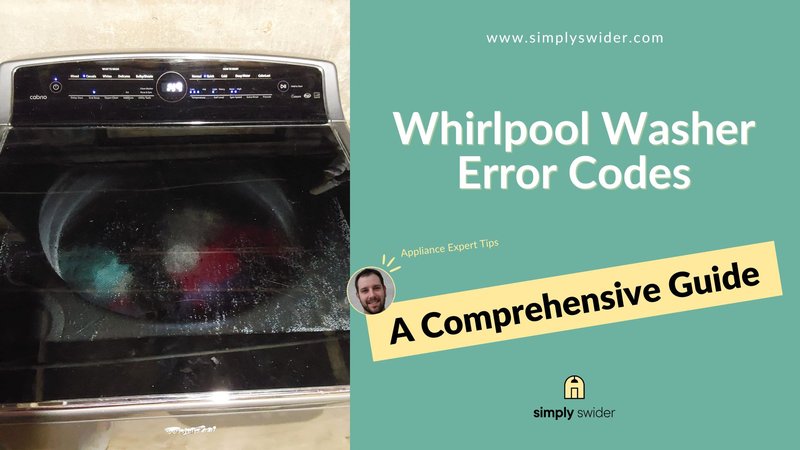
Here’s the deal: when the Error Code OE appears, it’s usually an indication that there’s something amiss with the draining process. It might be due to a clog, a kinked hose, or even a malfunctioning pump. Think of it like trying to drink a milkshake with a straw that’s blocked – it’s frustrating and messy! But the good news is, with a bit of guidance, you can often solve these issues without needing a pro.
Understanding the Error Code OE
The Error Code OE might seem cryptic at first, but it’s really just your dishwasher’s way of saying, “Hey, I’ve got a problem here!” The “OE” stands for “Overflow Error,” which signifies that the machine senses too much water remaining in the tub at the end of the cycle. This can happen for several reasons, often linked to the draining system not working as it should.
Imagine the draining process like a complex network of pipes and passages in your home. If even one part of this system gets blocked or doesn’t work, the water doesn’t flow out correctly. In dishwashers, several components play a part in this process: the drain hose, the drain pump, and sometimes, the filter. When these parts aren’t functioning smoothly, it can lead to an overflow error.
So, what causes these parts to falter? Well, debris such as food particles, soap residues, or foreign objects can easily clog them up. Over time, these blockages prevent the normal drainage of water. Therefore, it’s crucial to keep an eye on what goes into your dishwasher and perform regular clean-ups to avoid this pesky error code.
Drain Hose Blockages
Let’s talk about the drain hose, one of the main culprits behind the OE error. The drain hose is like the exit chute for all the dirty water from your dishes. If it gets clogged or kinked, water can’t leave the dishwasher. Picture this: it’s like having a garden hose with a knot in it – you’re just not going to get that water through no matter how hard you try!
A common reason for drain hose blockages is food debris. Even though your dishwasher does a great job of cleaning, small bits of food can sometimes sneak through, building up over time. In some cases, a kink in the hose happens when the dishwasher was moved or installed in a tight space, pinching the hose and restricting water flow.
To tackle this, you might start by inspecting the hose for visible kinks or twists. If it’s removable (and in many models, it is), you can detach it and try to flush it with water to clear out any obstructions. Remember, once you’ve ensured that the hose is clear and straight, reattach it securely to avoid any leaks.
Drain Pump Malfunctions
Next on our list of potential troublemakers is the drain pump. Think of the drain pump as the dishwasher’s little heart, working tirelessly to push out all the used water. If it’s not pumping correctly, the water remains stagnant, and then, bam – you’re hit with that dreaded OE code.
Why might the drain pump fail? Over time, it can wear out or become clogged with debris. Sometimes, foreign objects, like small pieces of glass or food, can sneak past the filter and jam the pump. When this happens, the pump can’t operate efficiently and might even produce a strange humming noise.
Troubleshooting the pump generally requires a bit more effort. First, ensure the dishwasher is unplugged and examine the pump for blockages. If you’re comfortable, you might take apart the pump housing and clean any debris. But if the pump appears damaged or doesn’t work even after cleaning, it might be time to consider replacing it. Regular maintenance helps keep the pump working smoothly, so make it a part of your cleaning routine.
Clogged Filters and Preventive Measures
Lastly, let’s not forget the filters. They are like the gatekeepers, catching all the unwanted stuff before it flows into the pipes. When these filters get clogged, it’s like a traffic jam where no one can move. This can result in water not draining properly, causing overflow and, you guessed it, the OE error.
Cleaning the filters regularly is crucial. You’ll typically find them at the bottom of the dishwasher, where you can easily remove them for cleaning. Rinse them under warm water and remove any stuck-on debris with a soft brush. It’s a simple task that can save you a lot of headaches down the line.
Preventing these issues from recurring is all about good habits. Make sure to scrape off food from dishes before loading them, and check the filters and hoses regularly for cleanliness. You might even run an empty cycle with a dishwasher cleaner occasionally to keep everything in top shape. By staying proactive, you can keep your dishwasher running smoothly and avoid seeing that pesky error code again.
In conclusion, Error Code OE in your Whirlpool dishwasher is a common issue that often boils down to drainage problems. By understanding the key players in the drainage system – the drain hose, pump, and filters – and maintaining them regularly, you can keep your dishwasher functioning at its best. If you ever find yourself in a jam, following these steps can help you troubleshoot and resolve the issue without much fuss. Remember, a little maintenance goes a long way in keeping your appliance reliable and efficient!